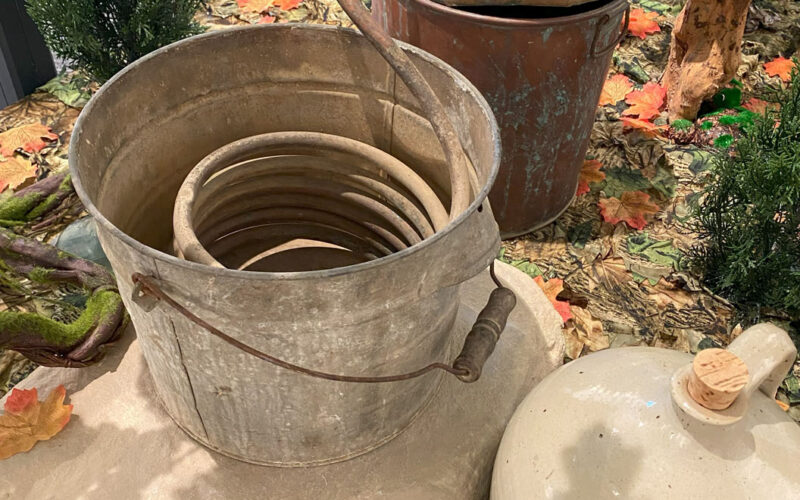BECCA MARTIN-BROWN
bmartin@nwaonline.com
Serena Barnett, director of the Rogers Historical Museum, calls “the tangled history of moonshiners and bootleggers versus the energetic women of the temperance society” the fulcrum of a new exhibit at the museum. “Last Call: History of Alcohol in the Ozarks” opened March 15 and runs through Nov. 9.
“We hope that what visitors take away from this exhibit is an understanding of how complicated this history is: a chronological pendulum of Arkansas law that has swung back and forth through the years between the cold sober teetotalers who campaigned for dry counties and the high-spirited bibbers who supported wet counties,” says Barnett, who is also the exhibit’s curator. “The legacy of this historic battle led to the present-day success of more retail alcohol sales than ever before in Northwest Arkansas.”
Barnett answered these three questions for The Free Weekly.
Q. Every exhibit has to have a catalyst. What inspired this one?
A. Our inspiration for the “Last Call: History of Alcohol in the Ozarks” exhibit stemmed from an exhibit we did in 2011. “Crime Stories” touched upon some of the 1920s-30s Prohibition era stories of moonshine production in Northwest Arkansas. This exhibit opened a year before Benton County became legally “wet” again for the first time since going “dry” in 1944. Today, especially with the booming popularity of breweries and distilleries opening in our region, we thought it would make an interesting exhibit if we expanded the Prohibition era story to include the back-and-forth history of alcohol laws from early statehood through present day. Plus, we have observed that the public is interested in hearing about thrilling stories of outlaws and bootleggers.
Q. What exciting artifacts did you find in the RHM collections to support the exhibit idea?
A. The most exciting collection item we discovered for this exhibit didn’t come from the RHM collection, but instead from the Shiloh Museum of Ozark History in Springdale. They have in their collection an authentic copper still, and they’ve kindly allowed us to borrow it for this exhibit. This still was made by blacksmith Henry Boeckman of Cross County, Ark., sometime before 1900. It produced 1 to 1.5 quarts at a time, and the cap would be sealed using bread dough.
Q. What is your favorite story that came out of research for the exhibit?
A. Our favorite story is a legend about a headstone from the year 1900 in a cemetery located on the Arkansas-Missouri state line that was used to illegally sell liquor during national Prohibition in the 1920s and early 1930s. This factory manufactured headstone is made of cast zinc — which makes it hollow inside. This type of headstone was available at the turn-of-the-20th century as a less expensive option to stone. The headstone’s front and back panels are only bolted on, which made them a convenient way for bootleggers to sell their illegal liquor. Customers in-the-know would leave money with a written note of their order inside and return back a while later to find their bottle of whiskey or jar of moonshine left by an unidentified and unlicensed alcohol vendor.
__
FAQ
‘Last Call: History of Alcohol in the Ozarks’
WHEN — Through Nov. 9; hours are 10 a.m.-4 p.m. Tuesday-Saturday
WHERE — Rogers Historical Museum, 313 & 322 S. Second St. in Rogers
COST — Free
INFO — rogershistoricalmuseum.org or 621-1154



